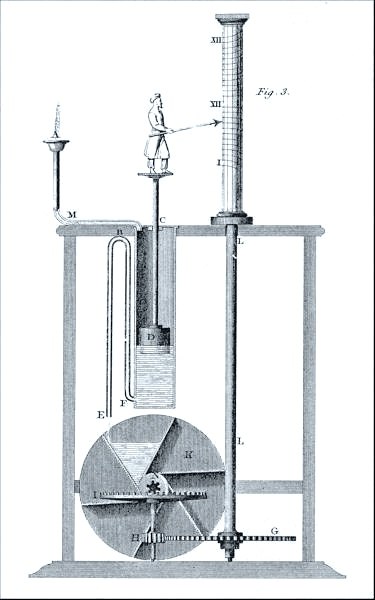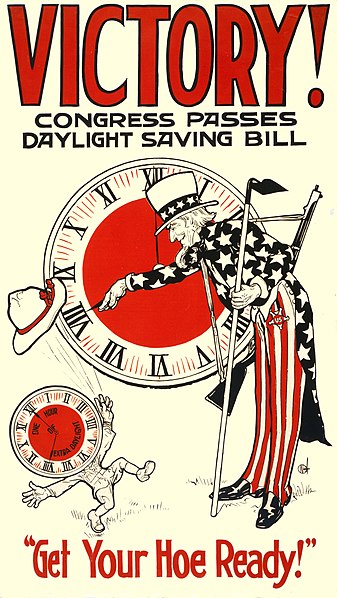Daylight saving time (DST), also referred to as daylight saving(s), daylight savings time, daylight time (United States and Canada), or summer time (United Kingdom, European Union, and others), is the practice of advancing clocks to make better use of the longer daylight available during summer, so that darkness falls at a later clock time. The typical implementation of DST is to set clocks forward by one hour in spring or late winter, and to set clocks back by one hour to standard time in the autumn (or fall in North American English, hence the mnemonic: "spring forward and fall back").
An ancient water clock that lets hour lengths vary with season
George Hudson was the first to propose modern DST, in 1895.
DST was first implemented in the United States to conserve energy during World War I (poster by United Cigar Stores).
Retailers generally favor DST; United Cigar Stores hailed a 1918 DST bill.
Summer time in Europe is the variation of standard clock time that is applied in most European countries in the period between spring and autumn, during which clocks are advanced by one hour from the time observed in the rest of the year, with a view to making the most efficient use of seasonal daylight. It corresponds to the notion and practice of daylight saving time (DST) to be found in some other parts of the world.
Night black sky at 9:06 am (UTC+04:00) on 23 December 2013 in Moscow





